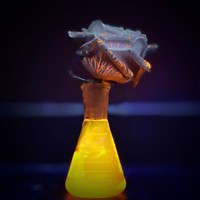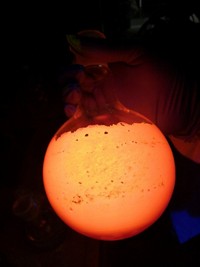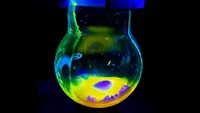Advertisement
Grab your lab coat. Let's get started
Welcome!
Welcome!
Create an account below to get 6 C&EN articles per month, receive newsletters and more - all free.
It seems this is your first time logging in online. Please enter the following information to continue.
As an ACS member you automatically get access to this site. All we need is few more details to create your reading experience.
Not you? Sign in with a different account.
Not you? Sign in with a different account.
ERROR 1
ERROR 1
ERROR 2
ERROR 2
ERROR 2
ERROR 2
ERROR 2
Password and Confirm password must match.
If you have an ACS member number, please enter it here so we can link this account to your membership. (optional)
ERROR 2
ACS values your privacy. By submitting your information, you are gaining access to C&EN and subscribing to our weekly newsletter. We use the information you provide to make your reading experience better, and we will never sell your data to third party members.
Photonics
Chemistry In Pictures
Chemistry in Pictures: Raise a glass to fluorescence
by Manny Morone
June 12, 2018

Chemists love their glassware, and the University of Prince Edward Island’s Brian Wagner is no exception. His favorite pint glass shows off structures of the most common compounds found in beer: ethanol, water, fructose, glucose, maltose, and flavor compounds from hops, such as cis-isohumulone (top left of the glass), humulene (center of glass), and myrcene. Wagner was pleasantly surprised when he noticed that the glass is also fluorescent under ultraviolet light. The glass glows blue because the manufacturers added metal oxides to the glass mix, which allow them to change a variety of the glass’s material properties. How did Wagner discover its blue glow? “I have a portable, battery-powered UV-A lamp, so yes, I do go around checking things out for fluorescence, in fact!” Wagner says.
Submitted by Brian Wagner. Follow him on Instagram and Twitter and Instagram to see more fluorescence of everyday things.
Do science. Take pictures. Win money. Enter our photo contest here.
Related C&EN Content:
CORRECTION:
This post was updated on June 14, 2018 to reflect the fact that several metal oxides can give glass blue fluorescence, not just lead(II) oxide as was previously stated.





Join the conversation
Contact the reporter
Submit a Letter to the Editor for publication
Engage with us on Twitter